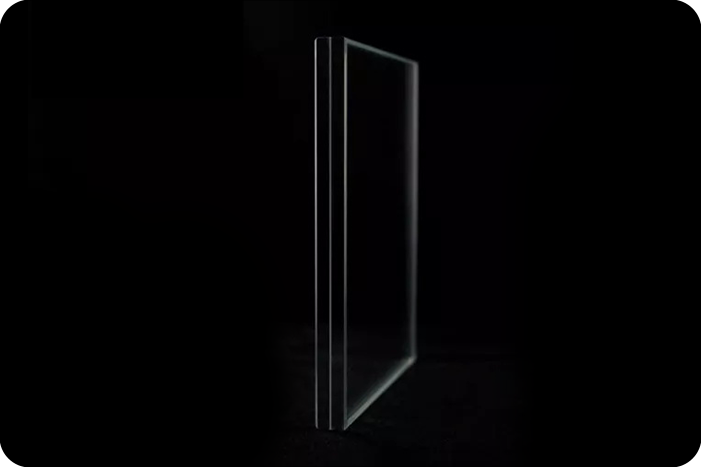Anti-deformation low-reflection glass maintains consistent optical performance across different viewing angles through a combination of advanced coating technologies, precise surface treatments, and material design that address both reflection and optical clarity. Here’s how it achieves this:
Multi-Layer Coating Technology
Angle-Independent Coating Design: One of the key strategies for ensuring consistent optical performance across various viewing angles is the use of multi-layer interference coatings. These coatings are specifically engineered to minimize reflection at a wide range of angles by controlling the interaction of light with the glass surface. The layers are typically made from materials like magnesium fluoride (MgF2), silicon oxide (SiO2), or titanium dioxide (TiO2), and are applied in precise thicknesses to produce a constructive interference effect that reduces light reflection uniformly across different viewing angles.
Broadband Coatings: Modern anti-reflection coatings are often designed to operate across a wide spectrum of wavelengths (e.g., visible light), which helps maintain consistent clarity and low reflectivity regardless of the angle from which the glass is viewed.
Optimized Layer Thickness and Composition
The thickness of each coating layer is critical in ensuring that the coating's reflective properties are optimized across a broad range of incident angles. By adjusting the thickness and refractive index of each layer, the glass can minimize reflection at not just a single angle but across a range of angles. This is particularly important for applications like displays, optical instruments, and architectural facades, where viewing angles are varied.
Advanced Coating Techniques: Techniques like sputtering or chemical vapor deposition (CVD) are used to apply thin, uniform coatings that ensure minimal variation in performance, even at oblique angles. These methods offer precise control over coating thickness, which is essential for achieving consistent performance across different viewing angles.
Anti-Glare and Light Diffusing Layers
Micro-textured or diffusing surfaces can be incorporated into the coating to help disperse light and reduce glare. These micro-textures (sometimes referred to as light-diffusing coatings) scatter light in multiple directions, which further minimizes the effects of viewing angle on reflection. This approach ensures that light is more evenly distributed, improving visibility and reducing specular reflection.
This diffusing action also reduces the intensity of reflections at wider angles, which is particularly useful in applications like photovoltaic panels, automotive windows, and architectural glass.

Surface Smoothness and Integrity
The surface smoothness of anti-deformation low-reflection glass is critical in maintaining consistent optical properties across different angles. Uneven surfaces or imperfections can scatter light in an undesirable way, leading to inconsistent reflectivity and distortion at certain viewing angles. To prevent this, high-quality polishing techniques are employed to ensure that the glass surface is as smooth as possible, providing a consistent interface for light transmission and reflection.
Additionally, advanced surface treatments (like ion exchange or chemical strengthening) improve the glass's mechanical integrity and surface smoothness, which helps maintain optical clarity over time, even when exposed to physical stress or temperature changes.
Material Properties
Glass Composition: The base material of anti-deformation low-reflection glass is often formulated to enhance its optical clarity and minimize inherent optical distortions. For example, using glasses with low dispersion or low birefringence helps to maintain consistent optical performance at varying angles of view.
Optical Uniformity: The glass is carefully designed and manufactured to ensure that its internal structure is homogeneous, which is essential for ensuring that light passes through without distortion, regardless of the viewing angle. This uniformity also helps to reduce internal reflections that can alter the appearance of the glass at extreme angles.
Geometrical Coatings and Surface Layer Adjustments
Gradient Refractive Index: Some advanced anti-reflection coatings use a gradient refractive index approach, where the refractive index of the coating gradually changes from the surface to the bulk of the glass. This gradual change helps minimize reflection from light entering the glass at various angles, maintaining high optical performance across a broader range of viewing conditions.
Layer Tuning for Viewing Angles: The coatings are sometimes designed with layers tuned to interact with light at specific incident angles, ensuring that reflections are minimized not just at perpendicular angles but across a wider spectrum of view.
Advanced Testing and Calibration
Quality Control: To maintain optical consistency across angles, anti-deformation low-reflection glass undergoes rigorous testing during production. This testing ensures that the glass performs optimally not just in standard conditions but also under various angles of incidence. Manufacturers may use tools like goniometers to measure the reflection characteristics of the glass at different angles and ensure uniform performance.
Angle-Dependent Reflection Measurements: Testing methods that measure reflectance at various angles allow manufacturers to fine-tune coatings and surface treatments to ensure that the glass consistently performs well, whether viewed head-on or from an oblique angle.
Impact of Viewing Angle on Reflection
The primary goal of low-reflection coatings is to ensure that the angle of incidence (the angle at which light strikes the glass) does not significantly increase the reflection. In conventional glass without special coatings, light striking the glass at oblique angles often reflects more, creating glare or visual distortions. Anti-deformation low-reflection glass, through its specialized coatings and surface treatments, minimizes these reflections at all angles, preserving both visual clarity and aesthetic quality.






